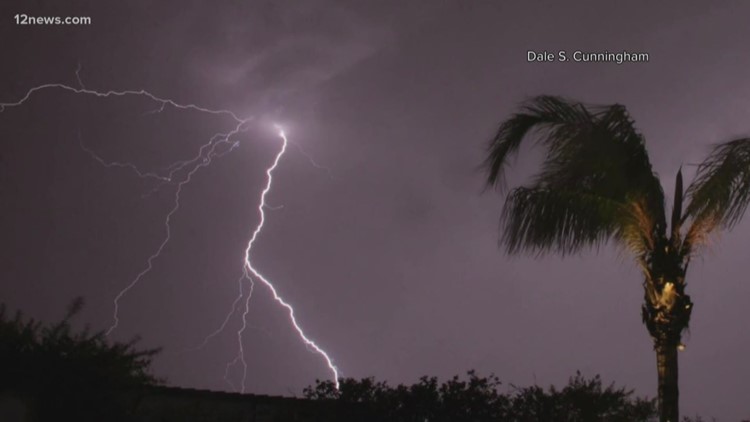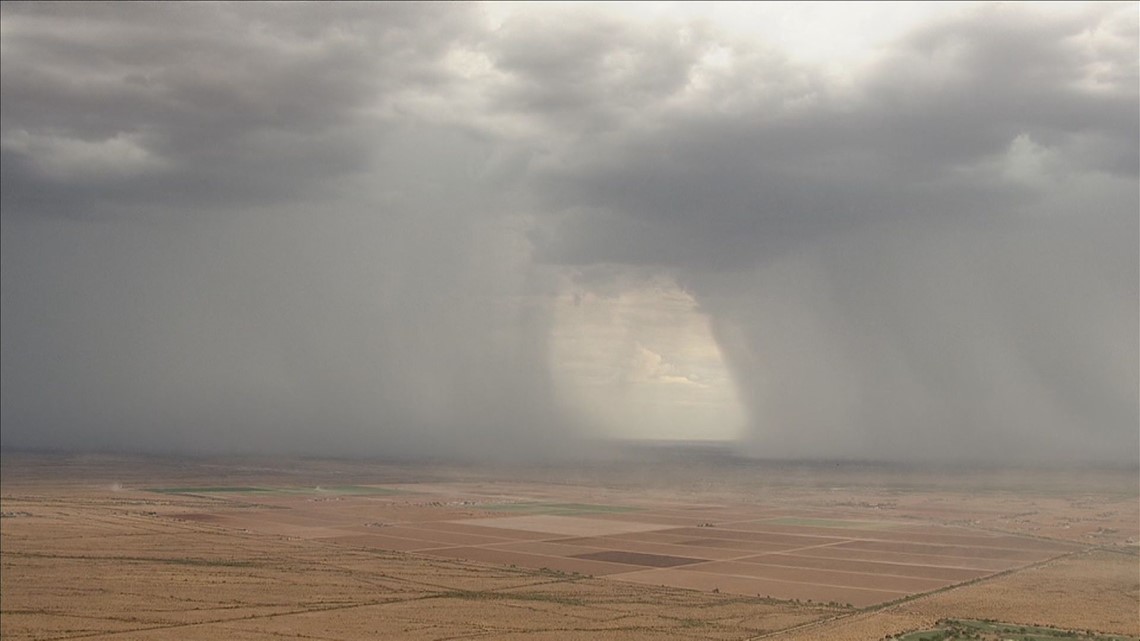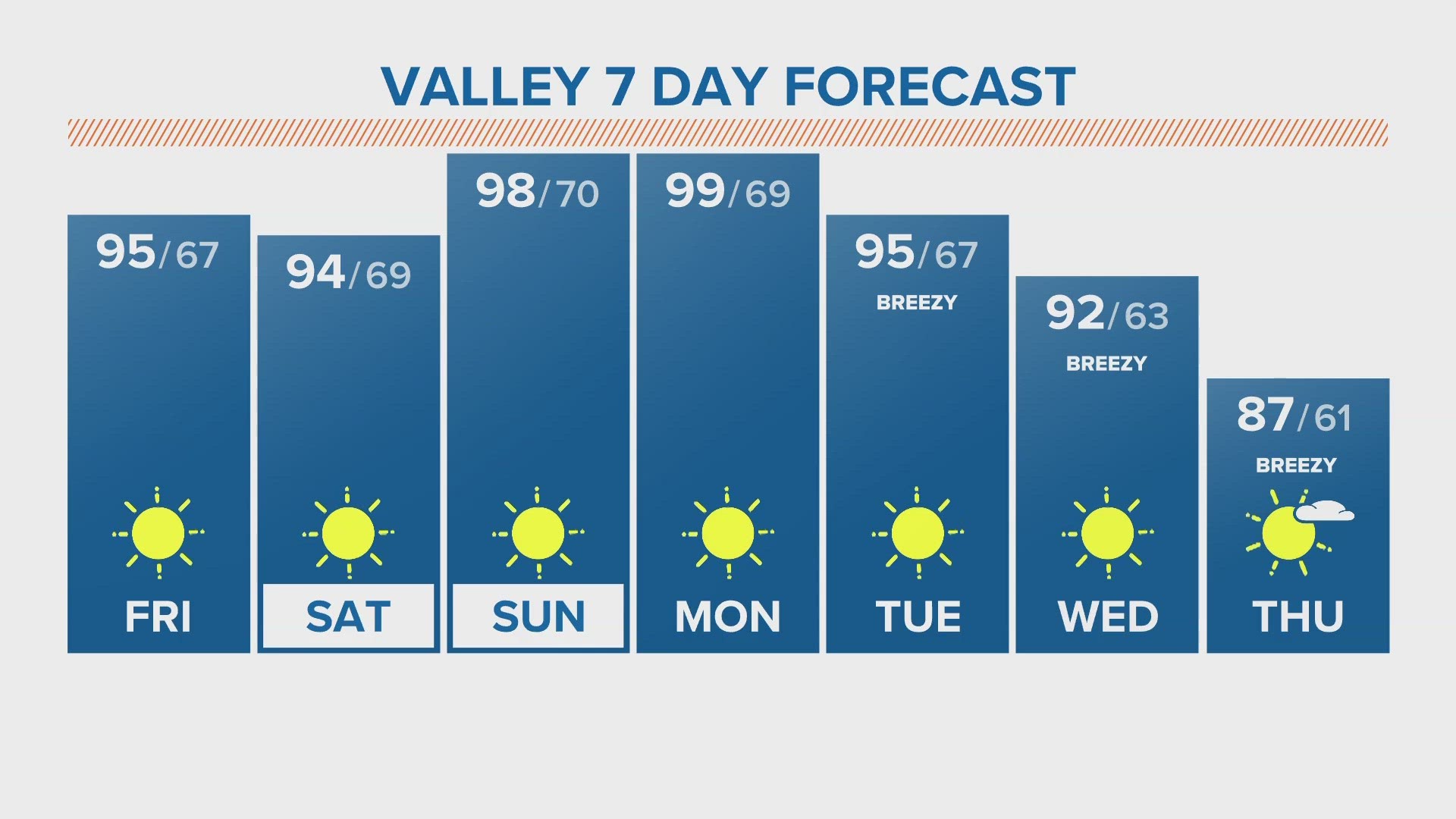ARIZONA, USA — Monsoon 2020 is right around the corner!
You may be wondering if this year will be a repeat of the “non-soon 2019” or if we’ll see more storms this year.
Climatological patterns like El Nino, La Nina, an active hurricane season, Arctic Oscillation, and the North Atlantic Oscillation can help meteorologists predict whether certain parts of the globe will trend hotter or colder or wetter or drier than normal on a given year. We can sum up the first six months of the year with above-average precipitation during the winter and hotter than normal temperatures in the spring.
But can these climate patterns that we’ve seen in 2020 help predict if this year's monsoon will be stormy or not?
After looking back over 124 years of monsoon data, the short answer is El Nino, La Nina and active Pacific hurricane years are the strongest predictors to determine what kind of monsoon year we’ll see in Arizona.
Does having a wet winter mean we’ll have a wetter monsoon?
In the top 10 wettest monsoons since 1896 Phoenix saw anywhere from 5.99” to 9.56” of rainfall. The average monsoon rainfall is 2.71”. There was no correlation between those wet monsoon seasons and how those winters looked. The winter months ranged from extremely dry in 1984 and 2014 to very wet in 1955. We saw 3.47” of rain between January and March which is above average however that statistic alone, can not help us determine how this monsoon season will look.
Here are some specific fast facts from our hot spring:
Our first 90 degree day on April 22nd and our first 100 degree day on April 26th. That 4 day separation between our first 90 and first 100 degree day was the 3rd shortest time between those temperature milestones that we’ve ever seen in Phoenix! There were 5 days in April where we hit 100 or more and that also was the 3rd most 100s we’ve ever seen in April. Typically Phoenix has its first 110 degree day by June 10th, however we saw our first 110 on May 29th which is about 2 weeks early.
Can hot spring temperatures translate into a stormier monsoon season?
Other years where we saw above average Spring temperatures include: 1934, 1936, 1989, 1990, 1992, 2001 and 2017. There was little correlation to predicting an above average vs below average monsoon based on a hot spring alone. In the seven years listed above where Phoenix endured a hot spring, 4 of the monsoons came out as below average rainfall, while the other three were above average. In short, there is little correlation to above average spring temperatures and monsoon precipitation.
What type of monsoon season do we typically see when there is a strong El Nino or La Nina present?
El Nino is classified as the warming of the ocean water off the coast of Peru and Ecuador. This warming has a global impact on the weather for the year! Not only does El Nino generate above-average rainfall for Arizona during the winter, but there is a STRONG correlation to above average monsoonal rain on strong El Nino years as well. 1926, 1958, 1966, 1972, 1982, 1992, 1998, 2014, 2015 were all STRONG El Nino years and each of those monsoon seasons featured above-average precipitation. An average monsoon season produces 2.71” of rain.
La Nina is the cooling of the ocean water off the coast of Peru and Ecuador. La Nina has a MODERATE correlation to below-average monsoon precipitation. 1973, 1976, 1988, 1989, 1999, 2000, 2007, 2010, 2011 were all years where there was a STRONG La Nina present, and each of those monsoon seasons correlated to below-average rainfall. There are a handful of years where Phoenix still had above-average rainfall on La Nina years (1974, 1976, 1998, 1999, and 2008) but overall there is a moderate correlation to seeing below-average monsoonal rain on years with a strong La Nina. Our 6th driest monsoon ever happened on a strong La Nina year back in 2007 with only 0.74”.
Does the Atlantic or Pacific hurricane seasons impact our monsoon in Arizona?
2020 will be a busy Atlantic hurricane season with 13-19 projected named storms. After looking at big Atlantic hurricane years in 1914, 1933, 1936, 1969, 1995, 2005, 2010, 2011, 2012, 2017, 2019 there was little to no correlation on how that impacted Arizona’s monsoon.
There is a strong correlation to above average Pacific hurricane seasons and wetter than normal monsoon seasons for Arizona. 1992 and 2015 were two years with heavy Pacific hurricane activity and we saw 3.29” of rain in 2015 and 4.28” during the 1992 monsoon. During years of record low Pacific activity in 2010 and 2003, we had two below average monsoonal years. The projection for the 2020 Pacific hurricane season is below average which could signal a below-average monsoon this year.
What do we predict for 2020?
Two of our strongest predictors for determining our monsoon are El Nino and La Nina. Sea temperatures are neutral off of the South American coast and there is a 55% chance that this will persist through the summer. As a result, these two climate factors cannot be used in predicting how monsoon 2020 will look.
Years where we saw wet winters and hot springs did not give a strong correlation to a wet vs dry monsoon.
Our strongest predictor for monsoon 2020 is that we’re expecting a below-average Pacific hurricane season, which has indicated below-average monsoon seasons in the past, but having just one strong predictor isn’t enough.
Based on reviewing data from the last 124 years and comparing that to years with wet winters and hot springs, my prediction is for the above-average temperatures to continue through the summer months and the drought to expand and worsen in northern Arizona.
It will also be an active fire season due to the abundance of fuel on the ground after our wet winter. There is not a strong correlation to years with wet winters and hot springs to the amount of precipitation we see during the monsoon. Therefore, there is an equal chance of seeing above average versus below-average precipitation.
Since we are not in an El Nino or La Nina year, we lack strong predictors that would help us predict the amount of precipitation possible this monsoon season.




